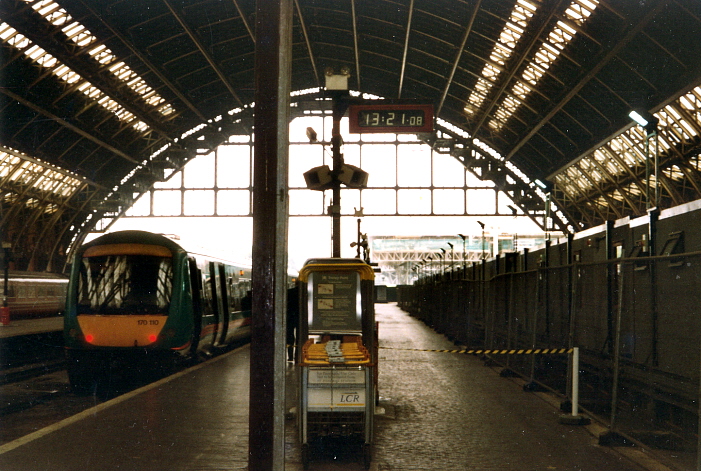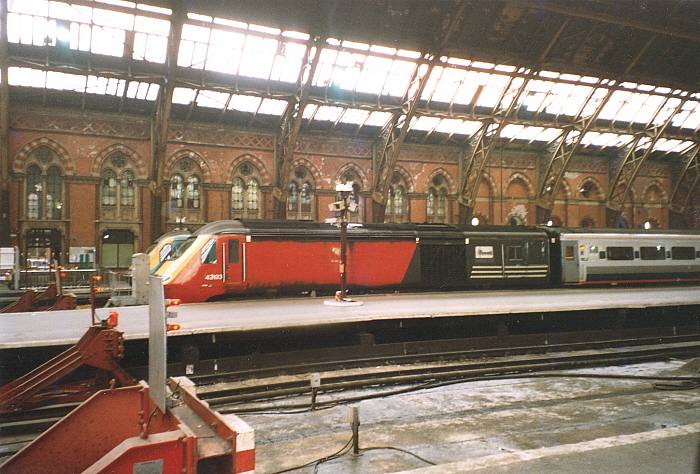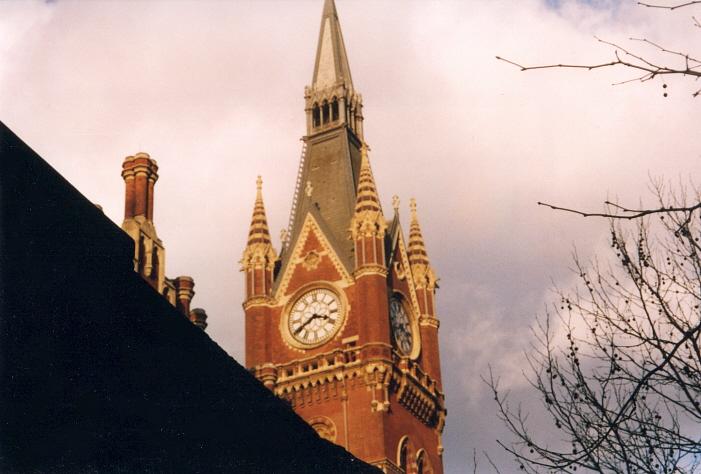

A northward view shows that, by 2004, building of the crude "interim" station for domestic services was in full swing, and the two most easterly platforms had been boarded off. On the right is Class 170 No. 170110: it was part of a fleet of "Turbostar" DMUs which arrived brand new on slow services to and from the terminus in 1998, only to be phased out and dispersed to other operators during 2004. In the centre of the photograph is a line of luggage trolleys branded by "London & Continental Railways", which had been the owner of the station since 1996. . © David Glasspool

The last glazed arch on the right of this view reveals the end of the hotel's extent along the western elevation, the building having been extended downwards from the main façade. No. 43193 "Plymouth", formerly of the cross-country fleet, is at the blocks. The Midland Railway made extensive use of 4-4-0 tender locomotives and since the station was situated on a gradient, many trains required a banking locomotive at the rear to get them started. The downward slope into the terminus also led to a number of buffer stop collisions over the years. © David Glasspool

The clock tower itself is a spectacular sight to behold, demonstrating just how advanced and skilful Victorian engineers and architects were. Four spires flank the main steeple, features which only add to the hotel's cathedral -like appearance. The clock tower side of the hotel was the first to be completed, coming into use on 5th May 1873. The original clock mechanism ceased working in 1967 and during the restoration work of the early 1990s, new clock faces were fitted. © David Glasspool
Return to the Kent Rail Homepage or alternatively, check for Updates.
Website & Copyright information - Links - Contact the Webmaster